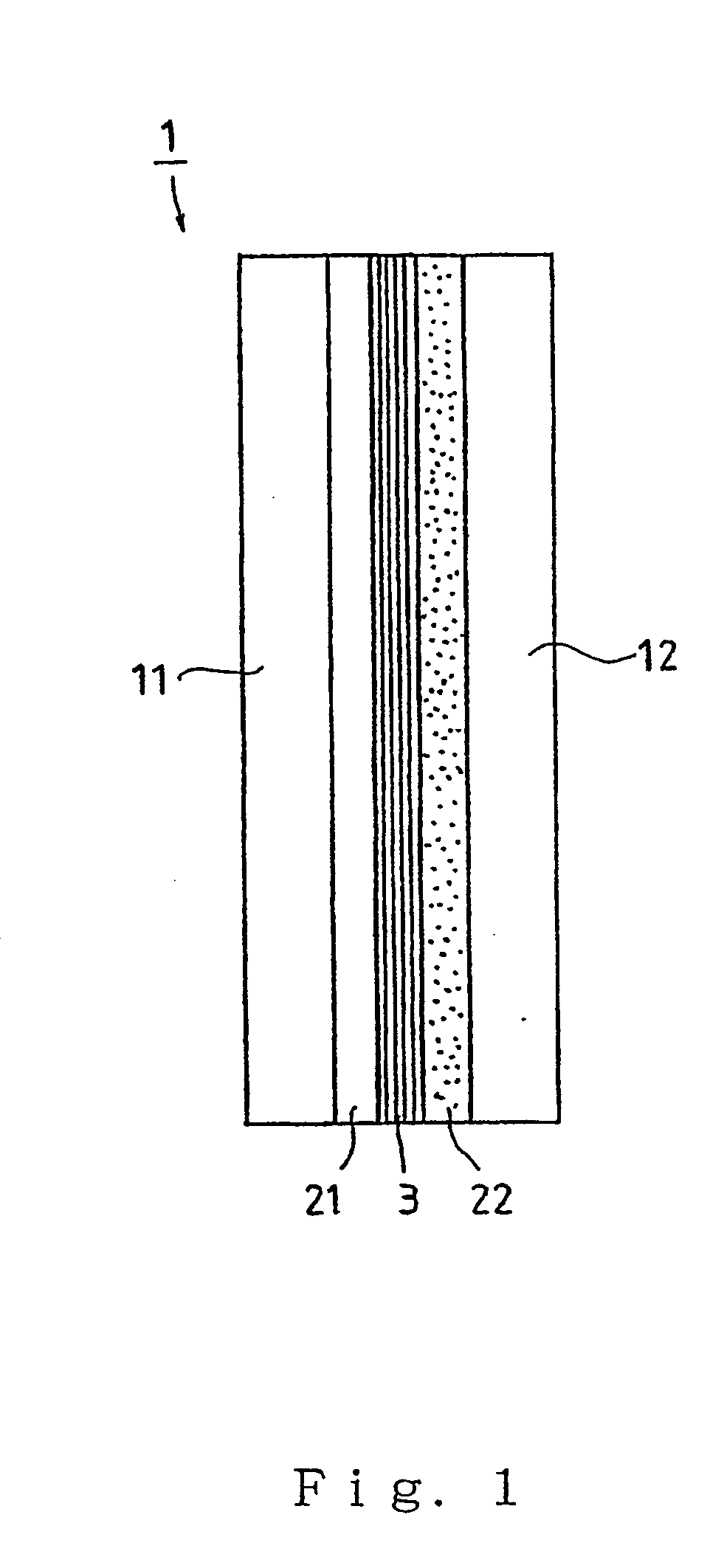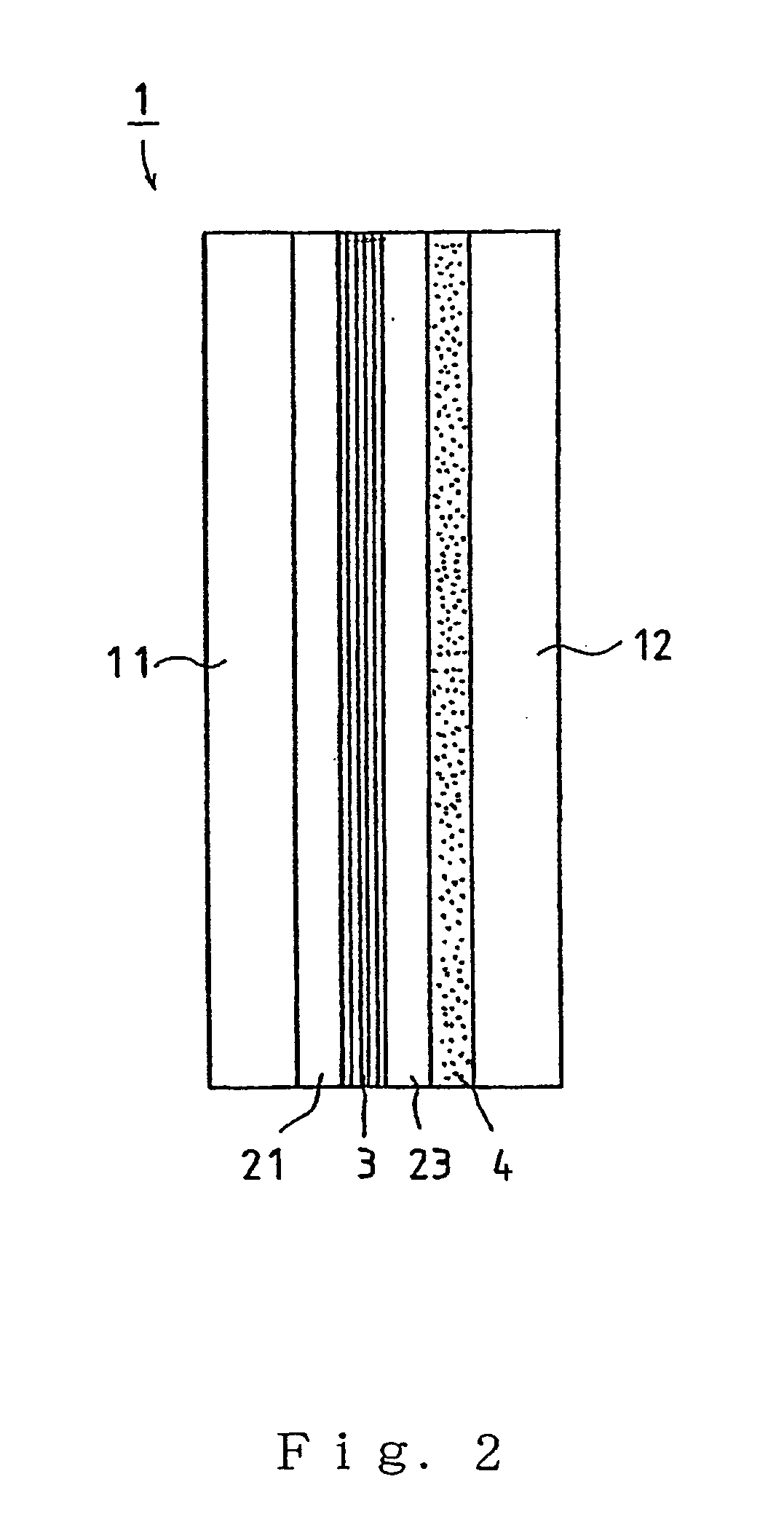Laminated glass
a laminated glass and glass technology, applied in the field of laminated glass, can solve the problems of large amount of absorbed thermal energy radiated into the interior of the vehicle, insufficient shielding solar radiation,
- Summary
- Abstract
- Description
- Claims
- Application Information
AI Technical Summary
Benefits of technology
Problems solved by technology
Method used
Image
Examples
working example 1
Clear Glass Sheet / Ultraviolet-Absorbing Green Glass Sheet Combination
[0033] ITO fine particles were used as heat shielding fine particles. Polyvinyl butyral (PVB) was mixed into a liquid of ITO fine particles dispersed in a plasticizer (triethylene glycol-di-2-ethylbutyrate) to prepare a vinyl-based resin composition. This vinyl-based resin composition was kneaded with a roller to fabricate a sheet-shaped heat absorbing interlayer with a thickness of 0.76 mm. It should be noted that at this time the content of the ITO fine particles was 0.7 mass percent of the entire resin composition.
[0034] On a first glass sheet (thickness: 2.1 mm) serving as the vehicle exterior side glass sheet were stacked an ordinary first interlayer (a PVB interlayer that is free from ITO fine particles; 0.38 mm), a heat reflecting film, a second interlayer (the heat absorbing interlayer with ITO fine particles dispersed therein), and a second glass sheet (2.1 mm) serving as the vehicle interior side glass ...
reference example 1
[0044] A laminated glass was obtained by adhering a clear glass sheet and an ultraviolet-absorbing green glass sheet using an ordinary interlayer to serve as Reference Example 1. This laminated glass was measured, and the results are also shown in Table 3.
[0045] It should be noted that FIG. 3 shows a graph of the transmittance curve of Working Example 1 (ex. 1) and the Comparative Example 1-2 (co. 1-2) and FIG. 4 shows a graph of the transmittance curve of the Comparative Example 1-3 (co. 1-3) and the first Reference Example (re. 1).
[0046] From FIG. 3, it can be seen that the Comparative Example 1-2 has a greater transmittance of light in the wavelength region of approximately 1100 nm and higher than Working Example 1, and from this it is clear that Comparative Example 1-2 has poorer solar radiation shielding properties. From FIGS. 3 and 4, it can be seen that the Comparative Example 1-3 has a greater transmittance of light in the wavelength region of approximately 900 to 1300 nm ...
working example 2
Green Glass Sheet / Green Glass Sheet Combination
[0048] A heat insulating laminated glass was fabricated in the same manner as in Working Example 1 except that the configuration of the glass sheets was altered by substituting a green glass sheet (2.1 mm) for the glass sheet on the exterior side of the vehicle and a green glass sheet (2.1 mm) for the glass sheet on the interior side of the vehicle (see Table 4).
[0049] The results are shown in Table 5. The solar radiation transmittance was less than 40%, indicating that sufficient sunlight shielding properties were obtained. The sunlight reflectance was high at 11.1%, demonstrating a large sunlight reflectance, and the amount of solar heat that is absorbed, that is, the total amount of heat that infiltrates into the interior of the vehicle, was low at 54.6%, indicating that this insulating laminated glass has excellent solar radiation shielding properties.
PUM
| Property | Measurement | Unit |
|---|---|---|
| visible light transmittance | aaaaa | aaaaa |
| particle size | aaaaa | aaaaa |
| visible light reflectance | aaaaa | aaaaa |
Abstract
Description
Claims
Application Information
 Login to View More
Login to View More - R&D
- Intellectual Property
- Life Sciences
- Materials
- Tech Scout
- Unparalleled Data Quality
- Higher Quality Content
- 60% Fewer Hallucinations
Browse by: Latest US Patents, China's latest patents, Technical Efficacy Thesaurus, Application Domain, Technology Topic, Popular Technical Reports.
© 2025 PatSnap. All rights reserved.Legal|Privacy policy|Modern Slavery Act Transparency Statement|Sitemap|About US| Contact US: help@patsnap.com



